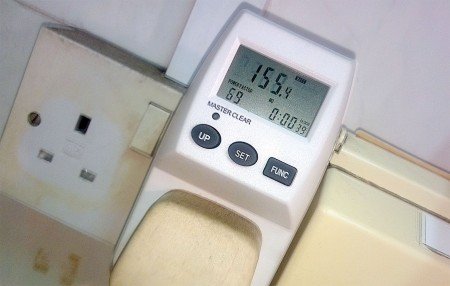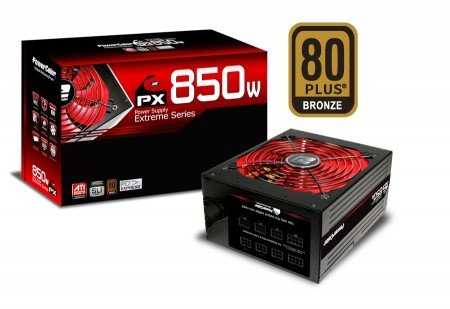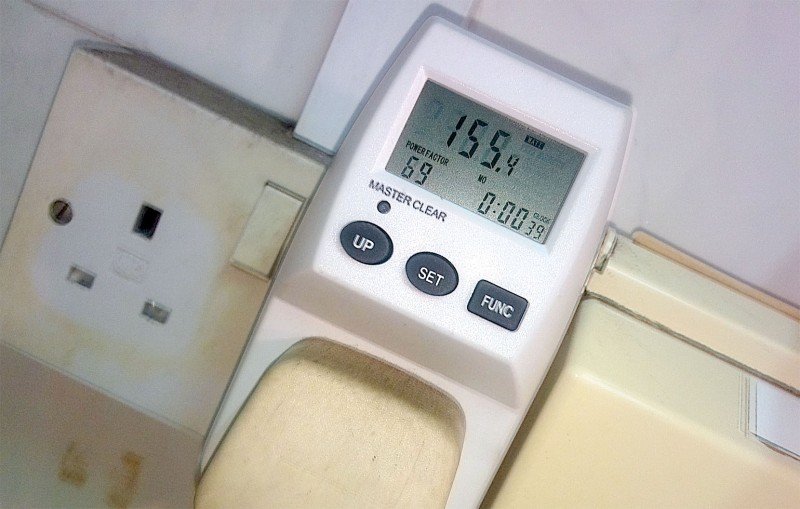Electricity bills are rather high in Singapore. I decided to do a thorough test of all appliances to see how much each device in my home draws. I live in a simple 4 room HDB flat and there are 3 members in the household including myself. This test is not to check if the power bill is right but rather to identify the most power hungry appliances and to note any interesting behavior.

The items tested are divided into a few broad categories – Major Household Appliances, Fans (my home has plenty of them), Lights, Chargers, Computers, Network, Sound System (HiFi). Everything has been published in a PDF file downloadable under the ‘Results’ section of this blog post.
Methodology
A watt meter was purchased from Element14. The company is a mid level distributor that do sell items over the counter. It’s a simple device. You plug it into the socket and plug your appliance through it. It does display other information such as voltage, amperes, etc but what I was interested in was power consumption. The drawback of this device is that it has no backlighting which can make things hard. My phone served as a flashlight in this case.
The second step was to take note of the different power phases or states of each device. Some are obvious such as fan speeds, on or off but some are not so direct. For example, a washing machine alternates between different states. Operation while spinning and when the drum is stationary results in vastly different draws. As many states were noted and recorded. The idea was to build a vast database of information of all the devices and appliances I have at home.

The test was done over a few weeks. It is not accurate to simply plug in the appliance, cycle through the different states and record the figures. You have to give it time. Most devices see power consumption surge when it is first turned on before gradually falling after a minute of operation or so. Spin up consumption is not an accurate figure and each device needed 20-30 minutes to ensure a fair test.
Results

The results are not too surprising. The most power hungry components were those that had heating/cooling elements. The iron, microwave, toaster, rice cookers were the usual suspects here. There were some surprises.
- The variance in power consumption between different sizes of rice cookers is rather huge so it is important to use what fits your family size. Many families end up buying a larger cooker just in case there are guests. You’re wasting a lot of power. I believe this will be the case for most kitchen appliances.
- It is interesting to note that stepping up a fan from Speed 1 to Speed 2 yields very little increased consumption. However, moving from 2 to 3 usually results in a sizeable jump.
- A piece of good news is that nearly all devices I have at home idle at 0W. This means when the device is off but left plugged in and the socket switched on – no power is consumed. This will put to bed some of the traditional practices of turning off the power socket’s switch to prevent ‘leaking’.
At this point you’ll probably be wondering what the actual numbers are. I’ve placed everything in a downloadable document (PDF). Kindly link back to this rather than independently mirror it. All consumption levels at different power states for each device are listed here.
Caveats
You would realize that there was no measurement of TV power draws. Why? My family doesn’t like having a TV around (and so we have 2 PCs and a sound system instead).
I did not test the air conditioner and a small number of appliances because they don’t use the normal plugs. It is possible to do that but I didn’t want to have to rewire things. Furthermore, the power draw for air conditioners are very different and the watt meter I have may not be able to handle it.
I did not list down the exact brand and model of the appliances in the first section because they have been around for about 10 years and I have no idea what their exact model is. If you wish to know more about those contact me directly. The later sections are more detailed because these were appliances of greatest interest to my family.
Conclusion
It is important to buy devices that fit your family size. Buying major appliances that are too large will cause unnecessary consumption of power. Unlike what is commonly said – computers do actually draw quite a bit of power because of the number of components in a full desktop set up. You might be better off choosing a power efficient CPU, GPU and PSU to keep costs down. You would want devices that can adjust efficiently to the power draw required.

I hope this test would prove useful for you as it did to my family. This is the main reason for sharing it online. The purchase of the watt meter and time spent running this test was worth it. My family now knows exactly which are the areas we can focus on cutting down or to replace inefficient devices.
